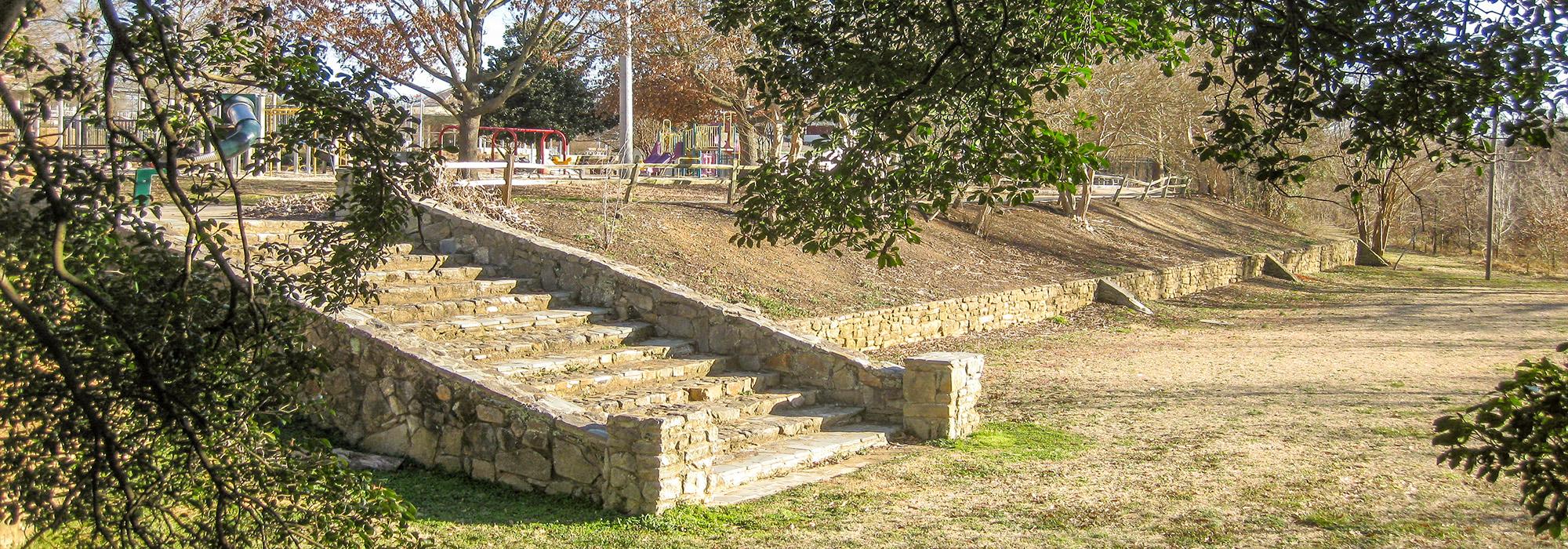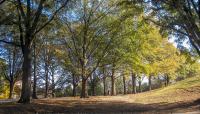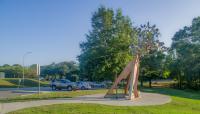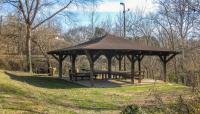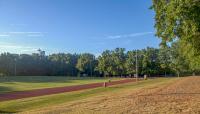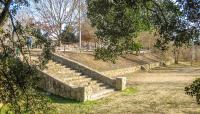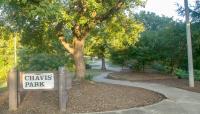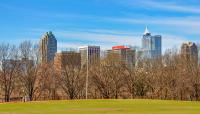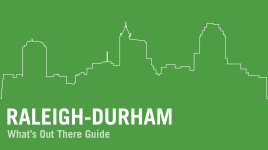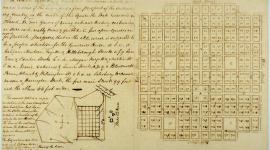Landscape Information
Located in southeast Raleigh and named for a free African American preacher and Revolutionary War veteran, this 26.5-acre park was developed in 1937 as a "separate but equal" recreational facility in parity with nearby Pullen Park. This was one of several segregated parks built in North Carolina with federal funding, including contributions from the Works Progress Administration. Making use of rustic materials, the park was designed by G. Robert Derick, a National Park Service landscape architect.
The park originally comprised an amphitheater, pool, carousel, and simple picnic shelters amid mature-canopy trees. Two bridges crossed a small stream running through the park. The bridges and amphitheater were faced with uncoursed or loosely coursed stone in shades of tan and brown. The shelters, built of rough log framing members, were left exposed, reflecting and blending with their surroundings. A track field at the northeast and a baseball field at the southeast were soon added. A 1972 master plan by Jerry Turner & Associates brought many changes. The Olympic-sized pool was replaced with a smaller pool and a community center was built (and later renovated). The Allan Herschell Carousel was moved from its central location to a climate-controlled carousel house in 2013. Other key features, including the bridges, picnic shelters, amphitheater, and the original carousel pavilion remain in their original locations. Listed in the National Register of Historic Places in 2016, the park has continued to be a focal point for the city’s African American community, though Raleigh's public facilities were fully desegregated in the 1960s.



